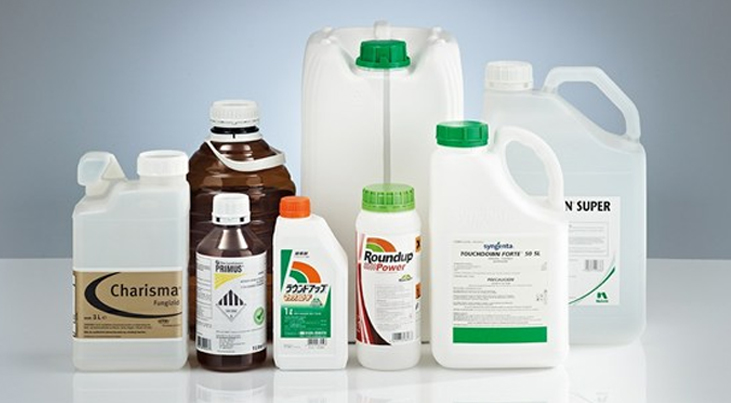Agrochemicals comprises of hazardous chemicals in the form of powders and granules that includes pesticides, insecticides, herbicides and fungicides. In India, 40% pesticides out of total pesticides are registered comprising of 4 class I A pesticides, 15 class I B pesticides and 76 Class II pesticides. The burgeoning demand for food supply due to rapid growth in human population has triggered agricultural intensification during the last few decades. And to meet this need, food producers have been rigorously using agrochemicals that helps increase the crops yield and boosts soil fertility to pest management and crop protection. Studies say that the use of fertilizers and pesticides in agriculture have been substantially increased both in developed and developing countries in recent years for attaining maximum yield of crops. Thus, these chemical based agrochemicals should be handle with care.
Since last five years, agrochemicals packaging and labelling industry has been using pictograms as symbols that indicates essential advice and warning messages to the users. Around 66 countries worldwide are vehemently using pictograms while packaging agrochemical products in new plastics and container designs. The safer packaging development of agrochemicals does not only involves safeguarding end-users and those in the supply chain, but also the general public and the environment. Back then before 1980, those engaged in development and selection of packaging for agrochemicals, used packaging material at the lowest cost consistent with basic safety and shelf-life requirements. Gradually the safety concerns came into picture and many metal containers were replaced by new barrier plastics that also encouraged branding of the agrochemical products. It was North America who took an initiative in extensive collection schemes for recovery of conventional single-trip packaging alongside the introduction of many returnable systems in appropriate markets. The agrochemical industry had to turn instrumental in addressing concerns on disposal and agree to cooperate and promote best practices through many educational and training sessions.
Agrochemicals are available in the following formulated products:
- Wettable powders (WP)
- Water-dispersible granules (WG)
- Dusting powders (DP)
- Granules (GR)
Agrochemical formulations are required to be preserved specially in humid climates. Manufacturers therefore prefer flexible packaging like pouches or bags to minimize the amount of packaging used or to be disposed when empty and fibreboard outer packs for strength. Apart from these types of containers, thermoplastic polyethylene is the preferred material because it has universal application as it forms a very good moisture barrier. For a water sensitive product in regards with its shelf-life, aluminium is considered as the best option as it provides additional moisture barrier.
Aluminium composite foil requires a heat-sealable inner layer and external protection against environmental influences. To its adjacent, physical strengthening and a print carrier are also required.
Similarly, for specific agrochemical formulation properties like a strong odour or volatile component, a composite film is required that consists of LDPE and an additional barrier, but not necessarily aluminium. PA or PET are ideal reinforcements for larger packages. Whereas, film or composite foil packages for powders or granules are usually tubular form-fill-seal (FFS) pouches, prefabricated bags or lined cartons. It is essential that seals are designed to minimize the retention of formulation after emptying and rinsing.
According to the final amendment into Indian Standards 8190 in 1999 regarding Requirements for Packing of Pesticides, every WP type of agrochemical products should be packed in trilaminated pouches polyested 12M/AL foil 9 micron/LDPE of 250 gauges of 120 g, 200 g and 400g of capacity in open top M.S Drum suitably acquired from inside with leak-proof and pilfer-proof closure system.
Type-approval test
Type-approval or UN testing means that the agrochemical package must pass a series of standard tests to prove its competence for dangerous goods i.e. drop, leak-proof quality, hydraulic pressure and stacking tests. Approvals are granted by the national competent authority. In GB the DETR is the competent authority and has appointed PIRA International (formerly the Packaging Industry Research Association). If a package passes the tests it receives a certificate and will be marked with the special UN packaging mark and code number.
So, for all the above types of agrochemical formulations, the principle in designing multilayer films lies in combining barrier properties. A multilayer film protects agrochemical products from outer contamination. Agrochemicals supplied to distributors should mandatorily meet these requirements. From filling to capping and labelling to packaging, you need processing machines that meet the ever-evolving requirements of agrochemical packaging industrial standards.
To conclude to this, we would say safer packaging development in agrochemicals is very important. If you too belong to agrochemical packaging industry and find yourself stuck in filling, capping, labelling and other processing dilemma, then we have got you covered. Contact us and expect the best ever packaging and processing services from NPM Machinery solutions.

